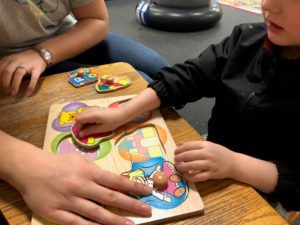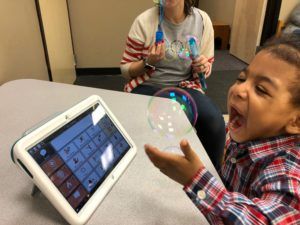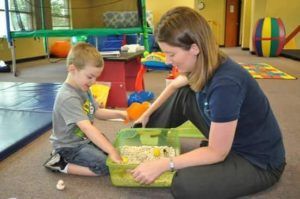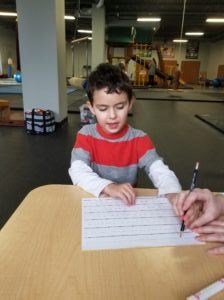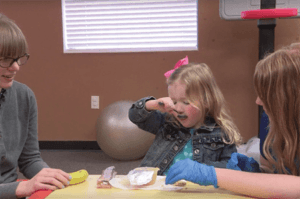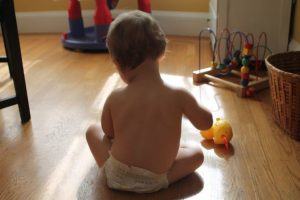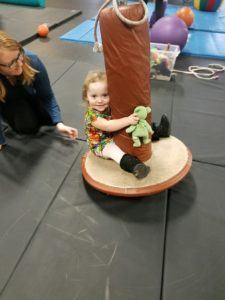Blog
Listed below are some great ways to target sequencing skills:
Create an obstacle course and have the child follow 2-3 step directions
Have the child describe basic routine events by telling what he or she did first, next and last (e.g. brushing teeth)
Have the child follow 2-step directions using “before” and “after”
Have the child participate in basic multistep events/tasks (e.g. making a pizza) and talk about the steps using “first, then, next, last”
Then have the child recall each step
Have the child sequence events of a story by recalling what happened in the beginning, middle and end
Have the child sequence events from a movie/television show by recalling what happened in the beginning, middle and end
Read More
SOCIAL SKILLS APPS
*These apps are only available for Apple products (iPhone, iPad) Apps for Social Skills
| App | Description | Price |
| Social Skills Sampler | Video clips describing social skills such as meeting/greeting people, taking responsibility, apologizing, following directions etc. Videos examples have adults in them and may be best suited for older children | free |
| Model Me Going Places | Social stories featuring children going to places around the community including hairdresser, mall, doctor, playground, grocery store, and restaurant presented in a book format with real life pictures. Great to help with transitioning to community outings. | free |
| Autism Xpress | Cartoon visualizations of emotions with sound. May help children identify emotions in other people and label their own emotions. | free |
| Hidden Curriculum for kids/Hidden Curriculum for adolescents | Social tips that explain the meaning behind social ideas | 1.99 |
| Quick Cues | Tips on what to do and how to interact in certain situations | $4.99 |
Now that the weather is colder, it will be difficult to make it out to the playground and outdoors. This can have a negative effect on all of us, especially those that need additional sensory input in their day. Below are some ideas of things you can do indoors to help provide sensory input for children:
-create an indoor obstacle course -jump on a mattress on the floor -go on a scavenger hunt in the house -animal walks – bear crawl, crab walk, frog jump -wheelbarrow walk -yoga poses -build a fort with heavy cushions, blankets and pillows (then put it all away) -help with chores (wiping the table, vacuuming, putting groceries away) -cooking preparation activities (such as stirring or mixing dough with your hands) -roll your child up in a blanket (not covering the head) into a human burrito -play flashlight games in the dark
Be creative and have fun through these colder months!
During snow days, children can have fun in the snow while working on fine motor and strength by using squirt guns, or squirt bottles to draw designs in the snow! Add water and food coloring for a great therapy activity in the snow.
Read MoreWhen children are learning to write their alphabet letters, it is beneficial to incorporate different ways for them to practice forming the letters. Different textures or messy play activities are a great way to engage children in this activity by having them try some of the following to form letters:
- Use their finger in a sand box
- Finger painting by connecting dots
- Using a toothpick in play doh
- Glue cotton balls in the shape of letters
- Stickers in the shape of letters
- Form the letters using a finger in shaving cream, cool whip, paint, or pudding
- Form the letters on a chalkboard, then have them erase the letters using a wet wipe or wet sponge for repetition.
- Alphabet letter shaped snacks (alphabet soup, letter shaped crackers, cookies or fruit snacks)
Incorporating a sensory technique, such as messy play or different textures, increases the child’s ability to process information by increasing their sense of touch, behavior, visual attention, focus, and interest in learning.
Read More
At Home Tricks for Picky Eaters
ALLOW YOUR FUSSY EATER TO EXPLORE AND PLAY WITH THEIR FOOD
Using the tactile or touch sensation will allow your child to explore the textures of foods more easily and “safer” through their hands first. Using fingers first, then progressing towards their mouth, is much less threatening and will lead to a better overall response and outcome.
GRIND UP THE FOODS
Grind up the foods that the rest of the family is eating using a food processor or chopper. This helps the child to get used to the taste first, and may help the child get used to the texture.
MODIFY THE FOOD
Increase the child’s tolerance of a food by changing the following:
how the food is cooked (raw, boiled, baked, fried, microwaved)
how the food is cut/shaped (round, stick, cube, use cookie cutters to make fun shapes like a heart or star, shredded, sliced)
what color the food is (rainbow goldfish versus the traditional orange goldfish, fruit flavored applesauce such as strawberry which is pink)
the temperature of the food (cold, room temperature, hot/warm)
the form of the food (apple, applesauce, baked apples with cinnamon/sugar; grape versus raisin; dried fruit chips versus raw or pureed fruit)
GIVE YOUR CHILD CHOICES WHENEVER POSSIBLE
Provide your child with 2 choices to give them more sense of control
The choices should be decided by the parent, such as 2 nonpreferred foods, but let the child choose which nonpreferred food they would like to taste that meal
Let the child spit the food out after tasting. This reduces the negative experience of tasting new foods, and can help take away the “fear” of that food. Eventually, this can also help desensitize the child to the food the more often they put it into their mouth whether they swallow or not.
PRAISE YOUR CHILD OFTEN
Let your child know you are proud of them during any kind of interaction with nonpreferred foods
If they did more than the time before, then something was accomplished
If they licked it, smelled it, chewed it, spit it out, played with it –the child should receive positive reinforcement, no punishment!
INCLUDE DIFFERENT FLAVORS WITH CONDIMENTS OR DIPS
Use different sauces or dressings to give more flavor to foods. Some kids prefer more spicy or flavorful foods to increase oral motor awareness for chewing or swallowing.
Ketchup, spicy mustard, honey mustard, yellow mustard, barbeque, ranch dressing, mayonnaise, gravy, steak sauce, honey, pizza or spaghetti sauce, sour cream, cream cheese, hummus
Please visit https://www.abcpediatrictherapy.com for more tips on Picky Eating.
Read More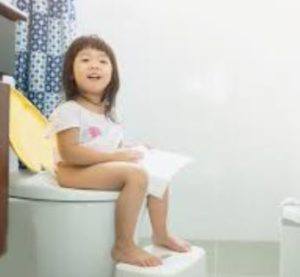
A key fact when considering toileting training is the long-term impact of toilet training on the family’s independence, resources, interactions and social acceptance. The time and effort invested in toilet training is temporary.
- Toilet training should not begin before age 18 months
- It becomes a priority if child is over 4 years old
- Most children need to be continent or exposed to habit training* before they are 5-6 years old.
*habit training- child is taught to eliminate on toilet at certain times of the day, opposed to eliminating when one is physically aware of the need to eliminate
Importance of Toilet Training:
- Personal care needs are one of the most important skills a person can learn
- Cleaning up wet and soiled clothing takes time, energy and resources
- Incontinence interferences with social acceptance
- Impacts home, family, community and school
- Embarrassment
- Stress
- Finances
- Jobs
- Social lives
- Physical demand
- Increased attention to child being trained
Characteristics to address when planning toilet training:
- Communication needs
- Sensory awareness
- Readiness
- Preference for routine or ritual
- Sequential learning
- Motor planning
- New situations/Anxiety
Addressing toilet training at school:
- Parents and teachers work as a team
- Share techniques in certain situations and experiences
- Support one another’s efforts
- Address equipment needs
Determining Readiness:
- Answering yes to any of these questions may indicate an appropriate level of awareness for initiating toilet training
- Does the child act differently or seem to notice when diapers or clothing are wet or soiled?
- Is there any interest or difference in behavior related to the bathroom, toilet, handwashing, dressing, undressing, or other related tasks?
- Has any interest or change in behavior been shown in response to seeing other people involved in activities or with objects related to toileting?
- Can the child remain dry or unsoiled during naps?
- An indicator of physical readiness for bowel training is regular bowel movements and no soiling during sleep.
- The physical ability to sit and hold one’s body in a upright position
- Basic cooperation with undressing related to toileting, in order to minimize agitation immediately prior to attempting to eliminate
- Freedom from medical conditions that contraindicate participation in toileting program
- Avoid postponing toilet training when an individual shows other signs of readiness, but does not remain dry for 1-2 hour periods or during naps.
Example: Jane was 4 years old. She enjoyed sipping juice throughout the day causing mom to frequently change her diaper. Mom then began giving Jane juice for 10 minute periods at a time, resulting in Jane voiding on a predictable schedule and a successful toileting program!
Developing a Training Program:
- Record a data chart for two weeks with information of observations made of the individual’s current elimination habits. Elimination patterns should be evident after 2 weeks. Began the teaching process by routinely taking the child to the bathroom 5-15 minutes before the times indicated on the data chart.
- Follow a visual schedule for eating foods and drinking fluids during toilet training to enhance regular elimination
- Identify appropriate times for toileting and include those times in the visual schedule
- Check the schedule, enter the bathroom, undress, sit on the toilet, wipe, flush, dress, wash and dry hands, and return to check the next schedule activity
- Rather than viewing toileting as a single event, it needs to be approached as a sequenced chain of behaviors that includes all the behaviors preceding and following elimination, ie: eat, drink, potty*, play outside.
*potty- enter bathroom, close door, undress, eliminate, access toilet paper, wipe, get off toilet, flush, dress, wash and dry hands, return to check rest of schedule
- Use a focus method to prevent impulsivity of leaving the toilet, such as counting, using a timer or stop watch, or singing
Sensory distress with flushing:
- Use pictures to help determine appropriate timing of flushing; discourage child from flushing prior to when toileting is completed.
- Those who are overwhelmed or frightened by flushing may need to be desensitized to the noise and swirling water. Pair positive reinforcers or comforting sensations with the sound or sight of flushing.
- Complete all steps prior flushing including opening the bathroom door, then flush and exit without running
- Develop stories that include the child’s name which describes the tasks of toileting that are expected to help the child being trained to understand what is to come and the reward. These stories are often called “social stories”. Ask an occupational therapist at ABC Pediatric Therapy for an example!
Dressing for the Occasion:
- Change the child’s affected clothing anytime it is wet or soiled. Frequently feeling wet against the skin for lengthy periods of time will desensitize the child to the discomfort of that sensation. This interferes with training.
- Common clothing styles to consider:
- Pull on pants or shorts with elastic band
- Loose fitting, non bulky
- Skirts or dresses
- Sweatpants
- Shirts that are hip length or shorter
- Diapers or plastic protectors may be worn outside of underpants
- Child must be able to feel the wetness while in training
Equipment to promote safety and independence:
- Potty seats that fit on the toilet and support the child while sitting or separate potty chairs
- Step stools that allow safe access to the sink or toilet
- Toilet paper placed in a convenient location to reach to get appropriate amounts
- Adjustments to doors, light switches, and water knobs to promote independence but safe use
Boys: Standing vs. Sitting
- Child is able to distinguish between need to urinate and defecate
- Observe and make choices appropriately to particular situations
- Seek out a male role model whom the boy observes and tries to imitate
- Child demonstrates coordination, focus, and control
Promote urinating into the toilet bowl by:
- Minimizing distractions
- Close the bathroom door
- Secure a stable position
- Use visual cues to show where to aim
- Provide rewards
- Calmly have the child clean and disinfect any messes
Sensations related to learning bladder control:
- Feeling of fullness
- Voluntary control when starting/stopping urination
- Feeling of emptying the bladder
- Feeling of an empty bladder
- Feeling of wet or soiled clothing
Techniques to help children learn to begin emptying once positioned on the toilet:
- Turn on the water faucet
- Decrease distraction
- Increase relaxation
- Provide visual and auditory focus
- Bladder control is learned prior to bowel control
Importance of effective communication:
- Use picture exchange, picture symbols with words, printed words, or object swap
- Make communication system always available for effective follow through and continuation of program
- Do not overlook any efforts of communication from the child
- Ignoring any efforts of communication from the child may result in the child resorting to unacceptable behavior or avoiding future communication attempts
Habit Training:
- Refers to the process in which someone is taught to eliminate on the toilet at specific times of the day, as opposed to accessing the toilet when one is physically aware of the need to eliminate
- May be appropriate if
- There is no awareness of the need to urinate or defecate
- The child is older than six years of age and other training techniques have not been effective
- The child has a mental age lower than three years old
- There is no awareness or change in behavior when diapers or clothing are wet or soiled
- A critical part is development and consistent use of a suitable schedule
- Avoid scheduling times that are only convenient; instead choose times that are 5-15 minutes before the person usually eliminates
- Routine is important!
- May result in preparing the child for learning to spontaneously access the toilet
When toilet training is successful:
- Toilet training is not complete until the child learns to
- Indicate the need to access the toilet without relying on cues or reminders from others
- Access the toilet independently when needed, without reminders from others
- Complete the toileting routine independently
- Rely on visual cues, instead of verbal prompts, when reminders are needed
- Rewards and reinforcements:
- Rewarding those successes with positive reinforcement is a critical part of the training process
- Plan any reward in advance
- Maintain a calm, non-emotional approach throughout training process
- Provide reward after the entire toileting routine is completed
- Include a picture of the reward at the end of the sequence to enforce what the child is working towards and how to obtain the reward
- Maintain structure of any kind as much as possible to increase success and independence
Toileting in unfamiliar places:
- Include toileting as part of the routine for departure before leaving home or school
- Making yourself aware of the location of restroom facilities upon arrival
- Carrying easily accessible picture cues or other communication supports that are part o the toileting routine
- Teach children to recognize male/female or boy/girl symbols posted outside bathrooms to determine correct facility use
Nighttime Continence:
- Daytime success must be accomplished prior to considering a training program for nighttime
- Limit fluid intake in the evenings and rely on daytime consumption to provide adequate fluids
- Consume no fluids for two to three hours before bedtime
- Have a regular time for going to bed each night, including weekends and holidays
- Have a consistent bedtime routine
- Toilet immediately before going to bed
- Toilet anytime awakened during the night
- Toilet immediately upon waking in the morning
- One potty break during the night is enough to control wetting at nighttime
- Try several different times throughout training to determine the best nighttime potty break when training
- For individuals who sleep soundly, have a care provider wake the child during the night during training for a potty break
- Use special aids such as timers, or toileting training devices that alarm the child when the device detects a small amount of wetness
- Avoid situations that increase anxiety, fear or stress
When someone reacts negatively to having diapers replaced with training pants or underpants:
- Place diapers over the underpants and over time gradually cut away or otherwise remove small parts of the diaper starting with the part that does not provide the greatest amount of satisfying feeling to the person
- Have him or her wear underpants instead of diapers for short periods of time daily, gradually increase the number of times per day in underpants, then increase the time frames
- Use preteaching strategies and reward wearing underpants
Amount of toilet paper use:
- Teach children to count a specific number of squares of tissue
- Use visual cues to help determine the right amount
If the learner resists using toilet paper to wipe:
- Include a picture cue that clearly shows “wipe with paper” in the toileting routine
- Provide toilet paper or wipes that are comfortable and easy to use; wet towlettes or warm, wet washcloths are sometimes preferable to persons who are more sensitive
- Provide assistance with wiping if needed, at first
- Post a picture where it is readily seen by the child when sitting on the toilet to remind him/her
For resource information or questions regarding your child’s development, please contact ABC!
Read More1. Multi-sensory: Does the toy make noise, light up, have texture, a scent, or movement to engage the child?
2. Provide a challenge without frustration: Make sure the toy provides different levels of force required to activate the toy, while also not having too many steps in order to engage or participate to activate the toy
3. Place: Is the toy easy to store? Is it transportable? Can it be used when in different positions such as sitting, sidelying, and/or wheelchair tray?
4. Individual Abilities: Does the toy represent both developmental and chronological age? Does it reflect the child’s interest and age?
5. Adjustability: Does it have capability to change brightness, volume, or height?
6. Safety and Durability: Can the toy be washed or cleaned? Is it moisture resistant? Does it fit the child’s strength? Are the toys parts the appropriate size?
7. Interaction: Does the toy facilitate the child’s interaction with others? Will the child be an active participant?

The TOYS-R-US App Guide for Differently-Abled Kids provides appropriate technology apps and games for those with varying levels of special needs. They also provide symbols to distinguish which skills the toy targets, instead of labeling toys by disability. The toy guide for differently-abled kids is available in stores and online!
This information was retrieved from www.toysrus.com
Read More*These apps are only available for Apple products (iPhone, iPad) iPad Apps for AAC
| App | Description | Price |
| Talking Picture Board | A simple picture board for children containing some 300 pictures organized in 20 categories such as animals, office supplies, toys etc. The names of the pictures is spoken when pictures are clicked. | Free |
| Sono Flex | A great AAC device that has good core words, ability to make sentences, and context specific vocabulary | $99 |
| Tap to Talk | A good starter AAC device to help kids communicate basic needs, emotions and requests. | Free |
| Proloquo2go | A good AAC device for basic requests. It is very easy to edit. | $189.99 |
| iconverse | A very basic 6 button communication device | $9.99 |
| iCommunicate | You can create flashcards, storyboards, visual schedules, and pictures. It includes 100+ pics but you can add your own. | $19.99 iPod$29.99iPad |
| Tap Speak button | It’s like a big mac switch that you can store unlimited messages for an unlimited time. | $9.99 |
| Yes-No | This is a simple yes/no communication app | $1.99 |
Read More
 Decreased Trunk Strength:
Decreased Trunk Strength:
W-sitting in often used in children to compensate for decreased trunk strength by widening their base of support. This position does not challenge their sitting balance and trunk strength to develop core stability.
Decreased Crossing Over Midline:
W-sitting discourages full trunk rotation and crossing over midline with their arms (or the ability to shift their weight from side to side). This delay of crossing over midline can also postpone the child developing a hand preference since objects on left are picked up by the left hand and objects on the right are picked up by the right hand.
Muscle Tightness:
W-sitting may decrease flexibility in a child’s hamstrings, hip abductors, internal rotators and heel cords (muscles of the hip, thigh and calf) by placing these structures in an extremely shortened range.
Orthopedic Concerns:
W-sitting may predispose a child to hip dislocation (the hip slipping out of the socket that holds the leg to the pelvis). A research study using MRI has shown that during w-sitting all participants experienced hip subluxation (slipping of the 2 hip bones out of place). 1 Another study showed that habitual w-sitting may also lead to excessive lateral tibial torsion (the thigh bone rotating permanently out of line with the hip socket).2
- Yamamura, M. et al. “An open-configuration MRI study of the femoro-acetabular impingement and subluxation in extreme leg position.” International Congress Series 1268 (2004): 597-601.
- Magee, David J. Orthopedic Physical Assessment> Philadelphia: W. B. Saunders Company, 1997.
If your child is challenged learning to take turns talking and be understood, try some of these tips.
First let’s define words you may hear when talking to professionals. Language is how we communicate our wants and needs. This can be done verbally or nonverbally. We have to know and understand things in order to talk about them. So, language is both understanding and expressing. Point to as many items in your child’s world as you can and name them for your child. This helps your child to increase the words he knows and understand what those words mean.
Pragmatics is social language or graces. It is how we greet people, hold a conversation, take turns speaking, the personal space we maintain when we are speaking to others, eye contact etc. It is like the manners or expectations of communication both verbal and nonverbal.
Now some tips for encouraging back and forth communication with your child:
• Encourage the use of “appropriate personal space”. Place a hoola hoop around yourself and one around the child. Explain that if they want to enter the other person’s space, they need to ask.
• Encourage asking for hugs (when the child wants one) to be consistent in teaching your child to respect someone’s personal space
• Encourage children to look at your eyes when requesting,
• Put their hands at your eye level to direct them and/or point to your eyes
• When answering yes/no questions, if the child is just saying back “yes or no”, expand the utterance to include the full choice to demonstrate that there are two clear choices (i.e. “Yes, I want more ball, or No, I am all done with the ball”)
• Encourage use of signs to communicate when the child is having difficulty requesting or commenting
• If they have a sign in their repertoire make them use it before giving them what they want (i.e. ball, more, all done)
• If your child has difficulty using vocalizations consistently when they do make noises, repeat it back to them with the exact same sound, tone of voice, and inflection
• This will help to teach them intent of communication, and that when they talk, you will respond back
• Expand upon words that your child is using (i.e. if they say “ball”, say “red ball”, or“big red ball”)
• This will encourage two word utterances
• Practice turn taking with games (i.e. candyland)
 Skip to content
Skip to content
